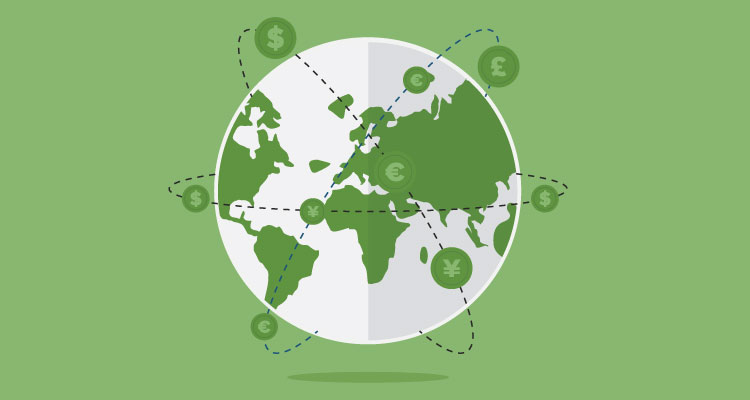As a business owner, you’re responsible for lots of tough decisions. And, one of the newer decisions that you’ll have to make when accepting payments. You could use payfac, you could sign up with an aggregator, or, you could go through the rigorous process of applying for a merchant account.
In other other words, you are either going to stick with the traditional merchant account service provided by an independent sales organization (ISO). Or, you will embrace the more promising sub-merchant account. This type of account is also known as a payment facilitator.
Table of Contents
ToggleWhat is a Payment Facilitator and the PayFac Model?
A Payment Facilitator, PayFac for short, is simply a sub-merchant account for a merchant service provider. It’s used to provide payment processing services to their own merchant clients.
“A payments facilitator (or PayFac) allows anyone who wants to offer merchant services on a sub-merchant platform. Those sub-merchants then no longer have to get their own MID and can instead be boarded under the master MID of the PayFac who is sponsored by a bank,” Roy Banks, CEO of NMI, tells PYMNTS.com.
“This allows merchant services to be offered in a very elegant and very efficient manner. The PayFac does not have to underwrite all merchants upfront — they are instead, underwriting the merchants essentially as they continue to process transactions for them on an ongoing basis.”
A Model For the Digital Age
It used to be that software and payments were completely separate. However, technology and transaction trends have since changed all of that as part of the digital ager. Now, technology has made it possible to integrate software and payments. The result has been a proliferation of new trends, including omnichannel.
The integration between software and payments have opened up other opportunities, such as EMV, and contactless, mobile payments. There are also now opportunities for NFC-based loyalty programs and an overall enhanced customer experience as part of this digital age.

How PayFac Fits
As Katherine Pensatori, Director of Web Marketing at United Thinkers LLC, further explains, “A payment facilitator is a relatively new type of an intermediary entity, which emerged as a result of merchant services market evolution. In contrast to other intermediaries, such as ISOs, payment facilitators handle merchant underwriting process, relieving acquirers from the need to perform related administrative procedures.”
Most PayFacs, according to a document from Vantiv, “are Software as a Service (SaaS) providers that extend their vertical solution suite by offering payments acceptance and processing as part of their overall package of services. Other PayFacs operate within a spectrum of horizontal marketplace models.”
PayFacs take on an active role in facilitating transactions by providing white-labeled payment processing services that can be integrated into a sub-merchants overall solution or as part of the PayFac’s own platform as a service. PayFacs facilitate the movement of funds on behalf of their sponsored merchants.”
The PayFac is liable for processing the accounts of their sponsored merchants and often offer additional features like transaction processing support, new account underwriting review, transaction monitoring, merchant invoicing, and other non-processing business services or solutions. Ultimately, a PayFac simplifies the merchant account process.
PayFac Examples
PayFac examples include shopping cart solutions and billing/recurring software. Since PayFac is a MasterCard processing model, it’s called Payment Service Provider for Visa, there are plenty of acquirers around the world.
These include the aforementioned companies and those like:
- Payrix
- Chase Paymentech
- Worldpay
- First Data
- ProPay
- Due
How Do PayFacs Work?
A merchant applies for a merchant account and enters seven or eight key data points. An underwriting tool evaluates the data. Then, it decides on approval in real-time. This is in contrast to an Independent Sales Organization (ISO) where you have to wait a week for a decision because of the intense applications. Payfac’s immediate information and approval makes a difference to a merchant.
Also, unlike an ISO, the PayFac provides the processing services, settlement of funds, and billing to the merchant. Even better? Funds are settled to the PayFac’s account and it’s determined by the PayFac to move those funds to the merchant. This means that the technology infrastructure required would be PCI Level 1 compliant. This means that the burden on the PayFac to handle chargebacks and fraud.
Payment Facilitators and Partners in the Payments Ecosystem
A payment facilitator works with a number of key players to facilitate the new payments ecosystem now in place. Here are the partners and the role they play.
- Acquiring Bank
Payment facilitators use merchant accounts to hold deposits. An acquiring bank supplies those merchant accounts. It also takes on the liability for any transactions processed through its payment facilitator customers. Therefore, since it has to carry that liability, the acquiring bank establishes some stringent requirements that the payment facilitator must follow. - Payment Processors
Payment processors authorizes transactions and send these to the appropriate card networks. They also settle funds from the bank that issued the credit card used in the transaction. To work efficiently, a payment facilitator and a payment processor must integrate. Otherwise, transactions will not be routed correctly. - Sponsors
Sponsors combine the acquirer and processor functions into one partnership. - Submerchants
Submerchants are a payment facilitator’s merchant customers. The payment transactions run through a merchant account. The payment facilitator owns this merchant account.
Advantages of the PayFac Model
Let’s look at some of these benefits in more detail. One of the key advantages of the PayFac model is that it speeds-up the onboarding process. As a Payment Facilitator you have the power to set-up sub-merchants quickly, which streamlines new client acquisition since they don’t have to fill out paperwork or provide documentation in order to set-up their account. For example, you can purchase a Square reader at your local Walgreens, have your account set-up within 30 minutes, and start accepting payments.
Other advantages include a flat fee structure and the ability to earn more money from network and transactional fees, and potentially float a much larger amount of payments for a much longer time. This benefit helps the merchant with cashflow.

The Payment Facilitator Landscape of the Future
With payments continuing to evolve, it’s important to look ahead to the future to see how payment facilitators will also change.
International Payments
Trends include the push toward more seamless experiences for international payments. Many challenges for payment facilitator expansion across the globe continue, however. Frictionless experiences for international payments are difficult without standardization across technology and the regulatory environment.
Universal payments may not happen any time soon, but the trend continues toward making progress and forming partnerships to deepen payment integration technology and payment models.
Ongoing Government Regulation
Even within the United States, government regulations often stand in the way of fintech progress. Additionally, issues related to taxation, standardization, and data security remain.
Opportunities Abound
However, there are signs of success in companies like Uber that now has the Uber debit card and auto loan options while Shopify is Shopify Grow capital to help fund small businesses. Providing these opportunities illustrates the increasing growth potential for payment acceptance among the small business segment that also seek more financial services options.
Looking to become a Payment Facilitator?
We’ve worked with dozens of different payment facilitators. Literally, dozens and want to direct you to the best. Fill out the form below to get started becoming a payfac today. ps, doesn’t matter how big or small you are as a company. I guarantee we can help get you the best rates out there.
Updated March 9, 2022













